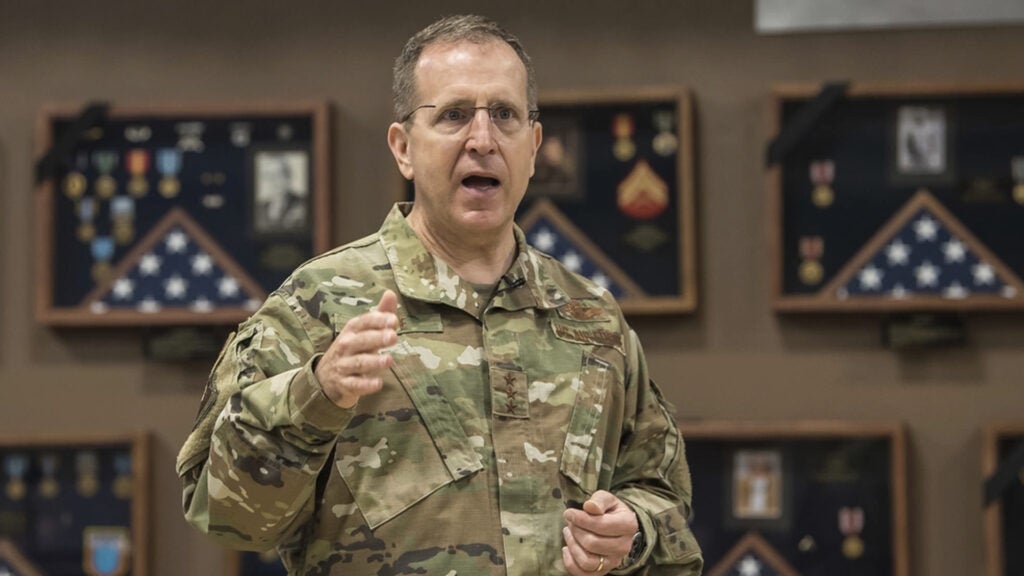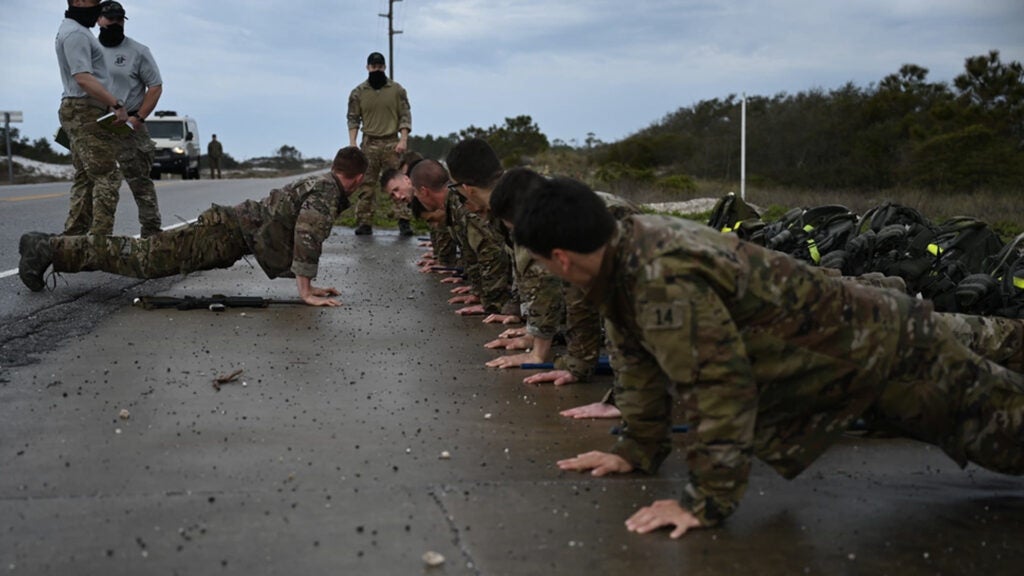The Air Force Special Operations Command’s handling of news that a female special warfare candidate received preferential treatment in the training pipeline has sparked a fierce backlash and proven accurate the warnings of a 2016 report that called for transparency in the military’s integration of women into special operations forces.
Last week, a letter written by an anonymous special tactics airman emerged detailing how a female special tactics officer candidate quit the challenging selection process and training pipeline multiple times, only to be reinstated by the leadership of AFSOC and the 24th Special Operations Wing.
At the time, the head of AFSOC, Lt. Gen. James Slife, said that most “of what the author asserted about this trainee’s experience is either factually incorrect or missing important context,” but he declined to provide specific examples in order “to avoid adding to the attention and pressure this trainee is facing,” he said.
Since then, details have emerged that cast more doubt on AFSOC’s handling of the situation. On Thursday, Air Force Times reported that the trainee herself protested the training standards being lowered for her.
“I believe the change in standards invalidated me with a majority of my team,” the captain wrote in an April 2021 memo obtained by Air Force Times. “One [instructor] cadre member had a conversation with a student and said that the cadre ‘rioted’ when they found out the PT test was changing back to lesser standards … Perhaps all of this timing was coincidental, but looks highly suspicious with my arrival on campus.”
This account runs counter to what Slife wrote on Facebook last week.
“The anonymous email’s author is concerned about training standards,” the general said. “We can unequivocally say the standards—which are tied to mission accomplishment—have not changed.”

When asked about the new details by Air Force Times, Air Force Special Operations Command referred the questions to Air Education and Training Command, which declined to answer. That lack of transparency may leave lasting damage on the command’s long-term efforts to integrate women into its elite units.
“A successful integration of women into SOF occupations will require transparency, effective leadership and communication,” researchers with the RAND Corporation wrote in a 2016 analysis about integrating women into special operations forces. The report was released shortly after then-Secretary of Defense Ashton Carter ordered the military services to open all combat jobs to women on Dec. 3, 2015. RAND found that special operators were not thrilled about the prospect of integration.
“The main finding in both our survey and focus group analyses is that there is strong, deep-seated and intensely felt opposition to opening SOF specialties that have been closed to women,” RAND wrote, also noting particularly high resistance among Navy SEALs and Air Force Special Tactics.
Across the military special operations community, 85% of survey participants opposed letting women into their specialties, and 71% opposed women in their units, RAND found. Their most pressing issue? “Many SOF personnel were concerned that standards would fall,” the report said. Operators were also worried that women would erode unit cohesion and leadership, but the concern about standards seemed to play a key role in RAND’s findings.
“Integrating women into SOF units has the potential to reduce unit cohesion if female special operators are not perceived as competent and are not accepted as full members of their teams,” the report said. “Male unit members’ beliefs about the standards to which women are held will also influence their perceptions of women’s competence.”
The standards for Air Force Special Tactics are among the most difficult in the world, with a two-year combat controller training pipeline that historically washes out 70 to 80% of its candidates. Air Force combat controllers and pararescue jumpers are trained to the same technical and physical standards as other special operators such as Army Green Berets and Navy SEALs. But combat controllers and PJs also receive extensive training in the form of air traffic control and combat medicine, respectively, so they can control crowded airspace, call in airstrikes, and evacuate wounded troops from deep behind enemy lines.
“The reason it’s so hard and 90% of males don’t make it, is because when it comes to combat it’s up to you to save that team, you’ve got to have the toughness to get through it,” said Eric Hohman, a former combat controller and Texas congressional candidate.. “If you have people without that mentality or fortitude, they’re going to quit, and now you’re sacrificing the lives of that person and also the teams around them.”
Those high-stress environments require absolute faith in the abilities of your teammates, Hohman said, and RAND’s findings agreed with that. The long-term success of integration hinges on “developing and fostering an equitable organizational culture, such as providing ample opportunities for women to demonstrate their competence,” the think tank said.

So far, it seems AFSOC has taken the opposite approach. According to Air Force Times, the female captain passed the physical fitness test needed to get into the multiple-year combat control training pipeline in January 2020. However, when she arrived at the combat control school, she learned that the physical standards had actually been lowered, and that she would have failed had she been held to the previous criteria. In fact, the change was so recent her scores were still marked as a failure on electronic records.
Teammates knew the standard “was at one point 300 pounds for the deadlift,” the woman wrote in April, according to Air Force Times. “During the test, we were not told any standards, and I lifted 250 pounds. Since I passed, they believed the standards had been bent for me.”
That belief would be devastating for her role as a special tactics officer.
“Had I chosen to continue, I would be responsible for leading these men,” the captain wrote. “Any bias that is created and supported by people in positions of authority (the cadre) would make it difficult for me to lead them.”
The airman quit the course multiple times over the course of her training, including once during a pool session in front of other students, but was kept in the course anyway, according to the original letter written by an anonymous special tactics officer. At one point, The then-24th Special Operations Wing commander and vice commander “talked to [the captain] about staying in the training pipeline despite her effort to self-eliminate/quit,” the author wrote. They even offered the captain “a highly selective spot at a Tier One Special Mission Unit,” despite that unit typically requiring an entirely separate selection process, the author said.
This sort of thing just does not happen in the combat control world, Hohman said. “Once somebody quits, they’re done,” he said.
The former combat controller emphasized that making the teams is about standards, not sex.
“If women can help us kill more bad guys and she can meet all the standards, by all means, let’s get them in there. But if Slife is lowering standards so a female can pass, that makes no sense whatsoever,” he said. “There are women who are badasses, like Ronda Rousey would whip my ass, but I’m not trying to get in a UFC fight with her.”
Slife asked the Secretary of the Air Force, Frank Kendall, on Jan. 7 to direct the branch’s Inspector General to review the situation. Hohman hopes the service will “do the right thing,” otherwise the consequences could disrupt the tight-knit special tactics community.
“This will just divide the career field,” he said. “Why did we pay the two-year cover charge and push ourselves to exceed the standards if some general can come in and change it.”
What’s hot on Task & Purpose
Want to write for Task & Purpose? Click here. Or check out the latest stories on our homepage.
